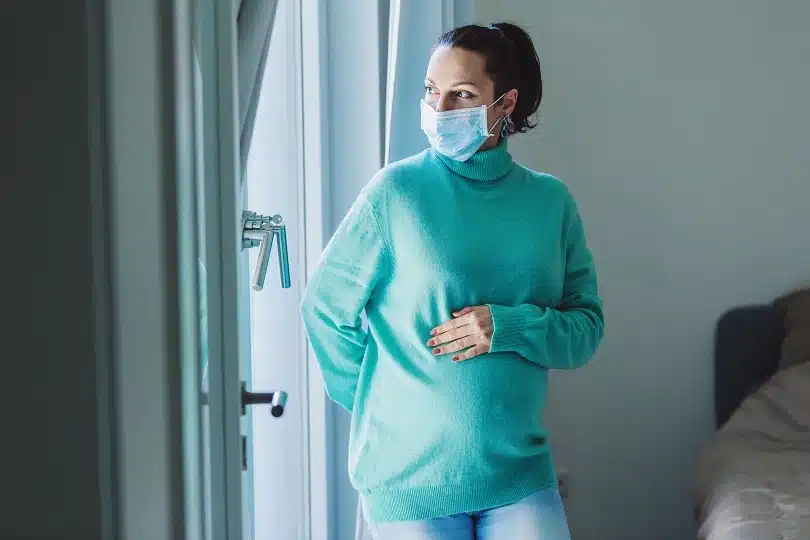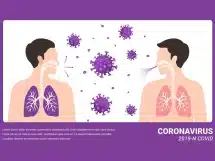Online search trends can provide insights into the information requirements of pregnant women navigating through COVID-19. We share the latest on pregnancy and COVID-19 along with guidelines for pregnant women.
By Anuja Venkatachalam
The COVID-19 pandemic poses a challenge for maternity care providers; particularly in India, which records the highest annual birth rate globally.
The National Health Mission reported over 16.1 million deliveries in a 9-month period between April and December 2019, out of which 94.3% were institutional deliveries. Less than 6% of women in India deliver at home. Consequently, hospitals manage an average of 1.7 million births per month. The sheer volume of births in tandem with additional infrastructural requirements for COVID-19, including testing and isolation facilities can place a huge strain on maternity hospitals.
It can also be a stressful time for women accessing ante-natal and post-natal care. This is manifested in the surge in online searches for information on pregnancy and COVID-19, including “coronavirus in pregnant women”, “advice for pregnant women during COVID-19”, and “are pregnant women more at risk for coronavirus?”.
COVID-19 in pregnant women
Pregnant women in India, and across countries have tested positive for COVID-19. However, there is no evidence of pregnancy increases the risk of contracting the disease. The World Health Organization maintains that pregnant women are at no additional risk of contracting COVID-19.
Due to the unavailability of clinical records, there is limited public information on the number of COVID-19 cases involving pregnancy. The Centers for Disease Control and Prevention recorded that in the United States, 8% of all COVID-19 patients hospitalized in March were pregnant women.
Studies from China shed some light on the characteristics of pregnant COVID-19 patients. Two studies published in the New England Journal of Medicine and the American Journal of Obstetrics and Gynecology respectively, found that most patients were in their trimester (week 27+) when they tested positive. Cough and fever presented as primary symptoms for most patients, although some patients did not show any symptoms; and only 8% of patients in both studies had a severe case of the disease.
Vertical transmission of COVID-19
There is currently no evidence of vertical transmission of COVID-19 from a mother to her child. Pregnant women have delivered while being COVID positive, and their offspring have tested negative for the disease.
The virus has also not been found in amniotic fluid or breastmilk, indicating that it is generally safe for COVID-19 positive mothers to breastfeed.
Maternal and neonatal mortality rates from COVID-19
Existing information on the adverse effects of COVID-19 on pregnant women comes from studies that analyzed clinical records of a small sample of pregnant COVID-19 patients in China. These studies find that COVID-19 (or SARS-CoV2) has fewer adverse effects on pregnancy than SARS-CoV1.
In the New England Journal of Medicine study of 118 pregnant COVID-19 patients in Wuhan, 58% delivered, and 21% of these deliveries were premature. 94% of the patients were discharged, and there were no fatalities at the time the study was published.
In the American Journal of Obstetrics and Gynecology study of 116 pregnant and COVID-19 positive women in China, 85% delivered, and 21.2% of these deliveries were premature. There was one case of neonatal death and no cases of maternal death in the sample.
Guidelines for managing pregnancy during COVID-19
The World Health Organization and United Nations Children’s Fund have released comprehensive guidelines to aide pregnant women through the pandemic.
In India, the Indian Council of Medical Research and All India Institute of Medical Sciences have released guidelines for pregnant women and maternal care providers.
Maternity hospitals across the country are mandated to test for COVID-19 prior to delivery, have isolation wards, and maintain maternal and neo-natal records of patients for future research on COVID-19. Additionally, they are required to care for pregnant health workers by providing them the agency to choose if they want to work in a COVID-19 facility with direct contact with patients. The All India Institute of Medical Sciences recommends that pregnant health workers who are in their trimester (28 weeks+) or have underlying health conditions must avoid direct contact with patients.
For expecting mothers:
-
Pregnancy does not pose an additional risk of infection. However, comorbidities such as diabetes, lung disease, kidney disease, asthma, heart conditions, and cancer have been identified as high-risk factors for COVID-19. If a pregnant woman has comorbidity, she will be in the high-risk category; and must take strict measures to maintain social distancing and hygiene. These practices must also be adhered to by co-habitants in order to prevent bringing the infection home.
-
If you observe any symptoms of COVID-19 (the most common being cough, sore throat, fever above 37.8 C, and additionally fatigue/body ache, nausea, and diarrhea among immunocompromised elderly pregnant women), reach out to a medical professional immediately; as you might require additional infrastructure and support for your pregnancy. Depending on the severity of your symptoms, the medical facility will either ask you to self-quarantine or test for COVID-19.
-
It is important to receive ante-natal care during pregnancy. Do not cut-off access to care with the fear of contracting COVID-19. Instead, speak to your doctor and explore the possibility of online consultation, limiting the frequency of hospital visits, and/or reducing the duration of hospital visits.
-
Maintain a diet that is rich in protein, vitamins, and micronutrients. You may consume meat and dairy products. They do not increase the risk of contracting COVID-19.
-
Minimize the number of visitors during delivery for your own safety and the safety of other patients. Instead, consider video-conferencing facilities. Visitors might also be tested for COVID-19, and mandated not to leave the hospital and return during your delivery.

















